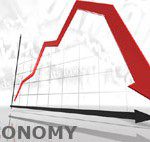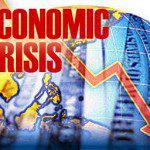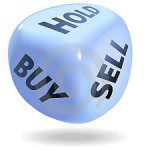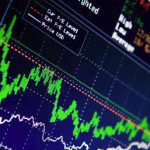There is a debate on Wall Street between those who believe we have entered into the next “secular bull market” and those who believe that the current market advance is predicated on artificial stimulus and, as such, the “secular bear market” remains intact. Take a look below at a series of charts designed to allow you to draw your own conclusions and convey your view in the comments section at the very bottom of the page. Words: 719; Charts: 12
next “secular bull market” and those who believe that the current market advance is predicated on artificial stimulus and, as such, the “secular bear market” remains intact. Take a look below at a series of charts designed to allow you to draw your own conclusions and convey your view in the comments section at the very bottom of the page. Words: 719; Charts: 12
So says Lance Roberts (stawealth.com) in edited excerpts from his original article* entitled Lance Roberts: The Market in Pictures.
[The following article is presented by Lorimer Wilson, editor of www.munKNEE.com and the FREE Market Intelligence Report newsletter (sample here) and may have been edited ([ ]), abridged (…) and/or reformatted (some sub-titles and bold/italics emphases) for the sake of clarity and brevity to ensure a fast and easy read. This paragraph must be included in any article re-posting to avoid copyright infringement.]
Roberts goes on to say in further edited excerpts:
…I have only included commentary where necessary in the series of charts below to clarify chart construction or analysis [so as not to unduly influence your assessment of the situation and your ultimate conclusions as to whether the U.S. is in a secular bull or bear market].
Valuation Measures
1. Tobin’s Q-Ratio & Shiller’s PE 10 vs. S&P 500 Analyses
The following chart shows Tobin’s “Q” ratio and Robert Shillers “Cyclically Adjusted P/E (CAPE)” ratio versus the S&P 500.
James Tobin of Yale University, Nobel laureate in economics, hypothesized that the combined market value of all the companies on the stock market should be about equal to their replacement costs. The Q ratio is calculated as the market value of a company divided by the replacement value of the firm’s assets.
Dr. Robert Shiller, also a Nobel Prize winning Yale professor, created CAPE to smooth earnings variations and volatility over time. CAPE is calculated by taking the S&P 500 and dividing it by the average of ten years worth of earnings. If the ratio is above the long-term average of around 16x, the stock market is considered expensive. Currently, the CAPE is at 24.42x, and the Q-ratio is at 1.00.

2. Easterling’s Long Term Returns Analysis
Doug Short regularly publishes the work of Ed Easterling who has done extensive studies on valuation and resulting long term returns.
3. Shiller’s CAPE vs. S&P Analysis
The next two charts are variants on Robert Shiller’s CAPE. The first is just a pure analysis of CAPE as compared to the S&P 500.
4. S&P 500 Cyclically Adjusted P/E & Reversion Analyses
The next chart shows the deviation of valuations from their long term average.

5. Real S&P 500 vs. Real GDP
Are stocks truly reflecting the economy?
One of Warren Buffett’s favorite valuation measures is Market Cap to GDP. I have modified this analysis utilizing real, inflation adjusted, S&P 500 market capitalization as compared to real GDP.

7. Margin Debt as a % of GDP
Since the stock market should be a reflection of the underlying economy, then the amount of leverage, or margin debt, in the market as a percentage of GDP could provide an important clue.

Deviation Measures
The following charts are measures of deviation from underlying trends or averages. The greater the deviation from the long term trends or averages; the probability of a reversion back to, or beyond, those trends or averages increases.
1. Deviation of Earnings Above & Below the Long Term Growth Trend
The first chart is the deviation of earnings from the underlying long term growth trend of earnings.

2. S&P 500 vs. 36 mo. Moving Average Deviation
The next chart is the deviation in price of both the S&P 500 and Wilshire 5000 from the 36-Month moving average…

3. S&P 500 vs. 50 mo. Moving Average Deviation
The chart below is the same basic analysis but utilizing a 50-week moving average which is a more “real-time” variation.

4. S&P 500 vs. the Volatility Index
The volatility index (VIX) is representative of investors “fear” of a correction in the market. Low levels represent investor complacency and no fear of a market correction.

Just For Good Measure

“Anatomy of textbook pre-crash bubble. Don’t rely on further blowoff, but don’t be shocked. Risk dominates. Hold tight.”
The above analyses, along with the economic data I posted recently, tells us much about where we are within the current economic and market cycle. While it is certainly easy to be swept up in the daily advances of the stock market casino, it is important to remember that eventually the “house always wins.” …
[Editor’s Note: The author’s views and conclusions in the above article are unaltered and no personal comments have been included to maintain the integrity of the original post. Furthermore, the views, conclusions and any recommendations offered in this article are not to be construed as an endorsement of such by the editor.]
*http://stawealth.com/daily-x-change/1878-the-market-in-pictures.html (Copyright © STA Wealth Management)
Related Articles:
1. 5 Red Flags of Imminent Economic Collapse
These 5 red flags will give you anywhere from a few days to a few months of warning that things are about to change drastically…and well before those around you grasp the full extent of what is going on. This is hopefully a scenario that never happens as this will truly be the end of the world as you knew it. Read More »
2. Stock Market Bubble & Coming Recession? These Charts Say Otherwise
The real value of the stock market is positively correlated, over time, with the amount of freight hauled by the nation’s trucks (in other words, the physical size of the economy has a lot to do with the real, inflation-adjusted value of the economy) and the latest numbers (see chart) strongly suggest that we are not in a stock market bubble. Read More »
3. We’re Heading Toward Another Nightmarish Financial Crisis! Here’s Why
We have not seen so many financial trouble signs all come together at one time like this since just prior to the last major financial crisis in 2008. It is almost as if a “perfect storm” is brewing, and a lot of the “smart money” has already gotten out of stocks and bonds. Could it be possible that we are heading toward another nightmarish financial crisis? Read More »
4. Taking the Temperature of the U.S. Stock Markets: What’s Hot, What’s Not
[Given the] big swings in enthusiasm for owning common stocks [we thought it timely to present] our opinion on the current temperature of the U.S. stock markets as to what’s hot and what’s not and the reasons why that is the case. Read More »5. These 2 Stock Market Metrics Make Me Feel Uneasy – What About You?
It’s been an amazing run in the stock market but…I start to feel a bit uneasy about things when I see all news reported as good news, because it either means the economy is getting better or more QE is coming. The fact, though, is that the market is just driving higher on what looks like sheer optimism of continued QE and little else. You can see this optimism in two indicators you’ll recognize. Read More »
6. The Stock Market Is NOT About to Crash Any Time Soon! Here’s Why
There’s nothing to be bearish about regarding the stock market these days. US stocks are not overpriced or overleveraged, and remain more attractive than at prior peaks so pop a pill and relax. There’s no immediate danger threatening stocks as the following market analyses clearly outline. Read More »
7. 5 Reasons It’s Really “Different This Time” for the Stock Market
We have experienced a huge bull market this year but any pundits are calling for the bullish move to end in a sharp downward correction…The bears have a case, historically and cyclically, but I am going to go out on a limb and say things are really different this time. Here are 5 reasons why. Read More »
8. Stock Markets Look Ripe For a MAJOR Correction – Here’s Why
Divergences between fundamentals, confidence and the valuation of markets are large and, as such, cannot last for long. The only question is how – and how quickly – this correction occurs. Read More »
9. Stock Market to Continue Onwards & UPwards – Here’s Why
Too often investors focus on the negative, lose confidence in stocks and, as a result, they can miss great bull markets. I believe when it comes to finding investment opportunities it’s all about both monetary and fiscal policy. As such, I encouraged investors to follow the money. With that in mind, here are two of my favorite charts that I believe demonstrate how investors can do exactly that. Read More »
10. Stock Market (Dow) Should Reach 20,000 By 2018 – Here’s Why
With the stock market up over 20% since we forecast in July, 2012 that we would see the Dow at 20,000…[by the end of the] decade, our forecast seems less ambitious than back then. US stocks are not overpriced or overleveraged, and remain more attractive than at prior peaks. As such, based on current conditions, we now project that…the Dow will reach 20,000 by late 2018. Read More »
11. The 1987 Doomers Are Back & They’re Wrong! Here’s Why
According to some pundits, the market is dangerously close to a repeat performance of 1987. Today, I’m going to show you why they’re wrong. Read More »
 munKNEE.com Your Key to Making Money
munKNEE.com Your Key to Making Money















Charts re wonderful but these days I think they illustrate Central Bank and Government manipulation instead of what a normal market activities, therefore they are only useful to see what has happened in comparison to the past, where as in the past they could be used to determine future swings in the market.
A great example was when the Hunt’s drastically changed the price of the entire Silver market, that is until the market place returned prices back to normal.